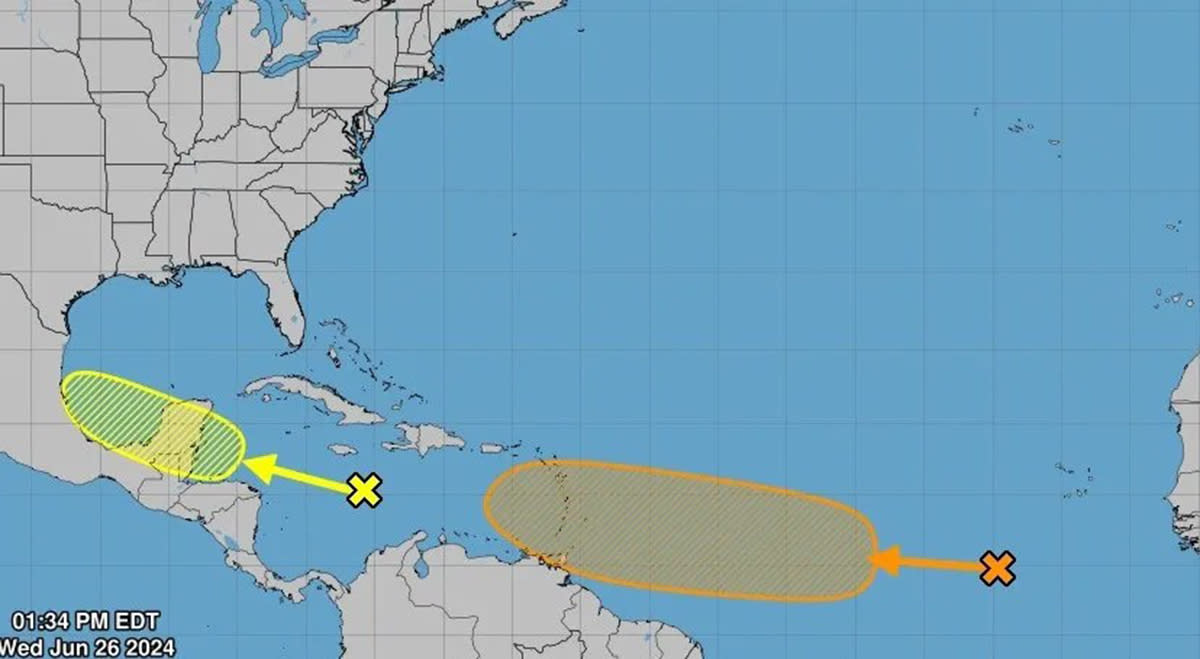Tropical wave moves over Gulf, another in Atlantic may develop by the weekend

A tropical disturbance that formed Monday off the coast of Guyana and Suriname is expected to reach the western Caribbean late this week, while a second disturbance in the far eastern Atlantic could develop soon after.
The tropical wave in the western Caribbean will travel west across the southern Gulf of Mexico in the direction of Belize and southern Mexico on the Yucatan Peninsula, the National Hurricane Center said. It is quickly moving west at about 25 mph.
As of 2 p.m. Eastern time Wednesday, it had a 20% chance of developing in the next seven days.
Forecasters are also tracking a second disturbance a few hundred miles southwest of the Cabo Verde Islands, which are located about 300 miles off the west coast of Africa. It could slowly develop this weekend or early next week while it moves quickly west, the hurricane center said.
As of 2 p.m. Wednesday, it had a 40% chance of developing in the next seven days.
The western Gulf of Mexico generated the 2024 season’s first tropical storm last week. Dubbed Alberto, the system made landfall in Mexico 250 miles south of the U.S. border, but sent storm surge and flood to spots 500 miles away in Louisiana.
The 2024 hurricane season, which officially began June 1, is expected to be extremely active.
In its annual May outlook, the National Oceanic and Atmospheric Administration said that the 2024 hurricane season has an 85% chance of being above normal, with 17 to 25 named storms with minimum sustained winds of 39 mph, and eight to 13 hurricanes. An average year has 14 named storms and seven hurricanes.
In addition, NOAA has forecast four to seven major hurricanes for 2024, meaning those that are Category 3 or above.
Experts at Colorado State University stated in their 2024 forecast that the U.S. East Coast, including Florida, had a 34% chance of a major hurricane making landfall this year. The average from 1880-2020 was 21%.
Forecasters say that the record-warm water temperatures that now cover much of the Atlantic Ocean will continue into peak hurricane season from August to October. That warm water fuels hurricanes. By early June, the tropical Atlantic was already as hot as it usually is in mid-August — peak hurricane season.
Hurricane season officially ends Nov. 30.
______

